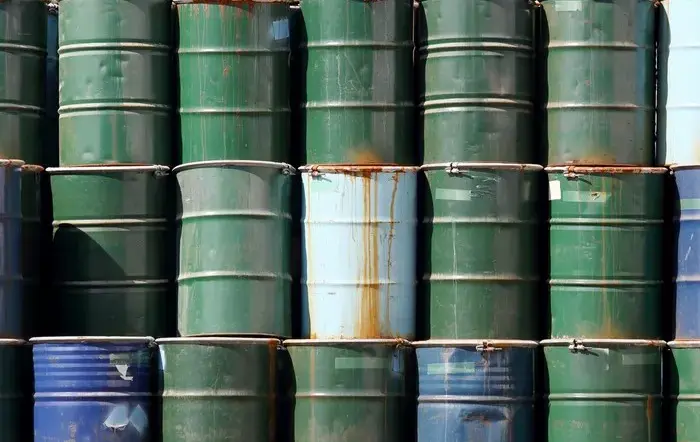Crude oil, often referred to as “black gold,” plays a crucial role in the global economy. It is a key driver of energy production, transportation, and manufacturing. While oil is extracted from many regions around the world, understanding the largest sources of crude oil can provide valuable insights into energy markets, geopolitics, and investment opportunities.
In this article, we will explore the biggest sources of crude oil globally, examine the factors that influence oil production, and assess the role of these major producers in shaping the future of the energy sector.
The Role of Crude Oil in the Global Economy
Crude oil is a naturally occurring fossil fuel that is refined into products such as gasoline, diesel, kerosene, and jet fuel. It is also used in manufacturing chemicals, plastics, and pharmaceuticals. The extraction and production of crude oil are vital for industries around the world, making it one of the most valuable and sought-after commodities.
Countries with significant reserves of crude oil often have substantial influence over global oil prices and energy policies. As a result, the world’s largest oil producers are key players in the international arena.
Major Sources of Crude Oil
There are several regions around the world that are known for their large oil reserves and production capacities. These regions dominate the global crude oil market and contribute to a significant portion of the world’s oil supply. The top sources of crude oil include:
1. The Middle East
The Middle East is by far the largest and most influential source of crude oil globally. This region is home to some of the world’s biggest oil reserves, particularly in countries such as Saudi Arabia, Iraq, Iran, Kuwait, and the United Arab Emirates.
Saudi Arabia: The World’s Largest Oil Exporter
Saudi Arabia is the largest producer and exporter of crude oil. The country has an estimated 266 billion barrels of proven oil reserves, making it the top holder of oil reserves worldwide. Saudi Aramco, the state-owned oil company, is the largest and most valuable oil company in the world.
Saudi Arabia is a key member of the Organization of the Petroleum Exporting Countries (OPEC), which helps regulate oil production to maintain price stability. The country produces approximately 10-12 million barrels of oil per day (bpd) and plays a crucial role in balancing global oil supply.
Iraq and Kuwait: Significant Contributors
Iraq and Kuwait also have vast oil reserves, ranking among the top 10 countries with the largest proven reserves. Iraq’s oil fields, especially those in the southern part of the country, are a major source of crude oil production. Kuwait’s Burgan oil field is one of the largest in the world and continues to be a critical asset for global oil supply.
2. The United States
In recent years, the United States has become one of the top oil producers globally, primarily due to advancements in hydraulic fracturing (fracking) and horizontal drilling technologies. These techniques have unlocked significant oil reserves from shale formations across the country.
Shale Oil Revolution
The shale oil revolution in the U.S. has propelled the country into the position of the world’s largest producer of crude oil, surpassing Russia and Saudi Arabia. As of 2023, the U.S. is producing approximately 12-13 million barrels per day, with Texas, North Dakota, and New Mexico being the leading states for oil production.
The development of shale oil has transformed the energy landscape in the U.S., making the country less reliant on foreign oil imports and even enabling it to become a net exporter of oil in recent years.
3. Russia
Russia is another major source of crude oil, with the country ranking as one of the top three oil producers globally. Russia’s oil fields are located primarily in Siberia and the Ural region, and the country produces around 10-11 million barrels of oil per day.
Russia is a key player in global oil markets and is a member of OPEC+ (a coalition of OPEC members and non-member oil-producing countries), which coordinates efforts to stabilize global oil prices. Russian oil is primarily exported to Europe and Asia, with China being a major consumer.
4. Canada
Canada is one of the largest oil producers in the world, primarily due to its vast oil sands deposits located in Alberta. The oil sands, also known as tar sands, contain bitumen, a dense form of crude oil that is extracted through mining or steam-assisted gravity drainage (SAGD).
Canada’s oil production has steadily increased in recent years, reaching around 4.5 million barrels per day. The country is also a major exporter of oil, with the majority of its crude oil shipments going to the United States.
5. Venezuela
Venezuela holds some of the world’s largest proven oil reserves, particularly in the Orinoco Belt. However, political instability, economic crises, and a lack of investment in the oil sector have significantly hindered the country’s oil production.
Venezuela’s oil production has declined drastically in recent years, from over 3 million barrels per day in the 1990s to under 1 million barrels per day in recent years. Despite this decline, the country still holds the world’s largest oil reserves, and future investments and reforms could lead to a resurgence in production.
6. China
China is primarily known for being the world’s largest importer of crude oil, but it also has substantial domestic oil production. The country produces around 4 million barrels per day, with its largest oil fields located in the northeast and offshore areas.
China’s oil production has remained relatively stable, but the country’s rapidly growing economy has led to an increasing reliance on oil imports. As of 2023, China is the world’s top importer of crude oil, sourcing oil from countries like Saudi Arabia, Russia, and Angola.
Factors Influencing Oil Production
Several factors influence the production of crude oil in different countries. These include:
1. Technological Advancements
Technological innovations, such as hydraulic fracturing, deepwater drilling, and seismic imaging, have made it possible to extract oil from previously inaccessible or uneconomical reserves. Countries that embrace these technologies, like the United States and Canada, have seen significant increases in their oil production capacities.
2. Geopolitical Stability
Political stability is critical to maintaining consistent oil production. Countries like Saudi Arabia, Kuwait, and the United Arab Emirates have been able to maintain high levels of oil production due to stable governance and a commitment to oil exploration and production.
In contrast, countries with political instability, such as Venezuela and Libya, have seen dramatic declines in oil production. Sanctions, civil unrest, and conflict can all impact a nation’s ability to produce and export oil.
3. OPEC and OPEC+ Agreements
OPEC, and its expanded version, OPEC+, play a significant role in regulating global oil production to maintain price stability. These organizations agree on production quotas to prevent overproduction and underproduction, which can lead to volatile oil prices.
For example, Saudi Arabia, Russia, and other OPEC+ members often agree on production cuts or increases to balance supply and demand in global oil markets.
4. Investment and Infrastructure
The level of investment in oil exploration, drilling technologies, and refining capacity directly impacts a country’s oil production capabilities. Nations like the United States, Saudi Arabia, and Russia have invested heavily in their oil sectors, allowing them to remain among the world’s largest oil producers.
5. Environmental and Regulatory Factors
Environmental concerns and regulatory measures aimed at reducing carbon emissions have affected oil production in some countries. For instance, many developed nations are increasingly focused on transitioning to renewable energy sources, which may limit investments in new oil production projects.
Future Outlook of Global Crude Oil Production
The global oil landscape is constantly evolving. While the Middle East and other major oil-producing regions will likely remain dominant for the foreseeable future, new technologies, shifting geopolitical dynamics, and the global push toward renewable energy are likely to shape the future of oil production.
The rise of electric vehicles, for instance, could reduce the demand for gasoline and diesel, leading to a potential decline in oil consumption over the next few decades. However, oil will continue to be essential for industrial processes, petrochemical production, and aviation for the foreseeable future.
In addition, countries like the United States, Canada, and Brazil are expected to increase their oil production capacities, especially as new oil discoveries and advancements in extraction technologies continue to drive supply.
Conclusion
Crude oil is a vital resource that drives the global economy. While the Middle East remains the largest source of crude oil, countries like the United States, Russia, and Canada have become increasingly important players in global oil markets. Technological advancements, geopolitical stability, and investment in oil exploration are key factors influencing oil production across the world.
As the world moves toward cleaner energy alternatives, the future of crude oil production may face challenges. However, for the time being, oil will remain a critical component of global energy consumption and industrial processes. Understanding the biggest sources of crude oil and the dynamics that influence production can provide valuable insights for investors, policymakers, and industry professionals alike.
Related topics:

































